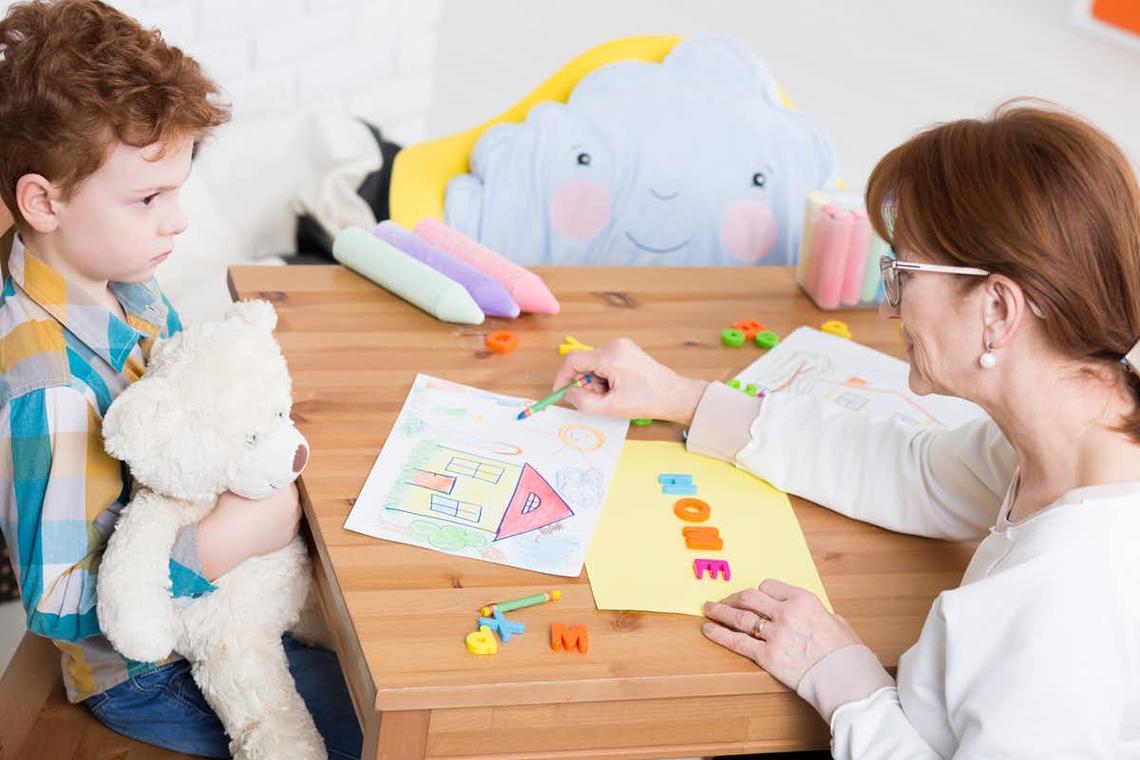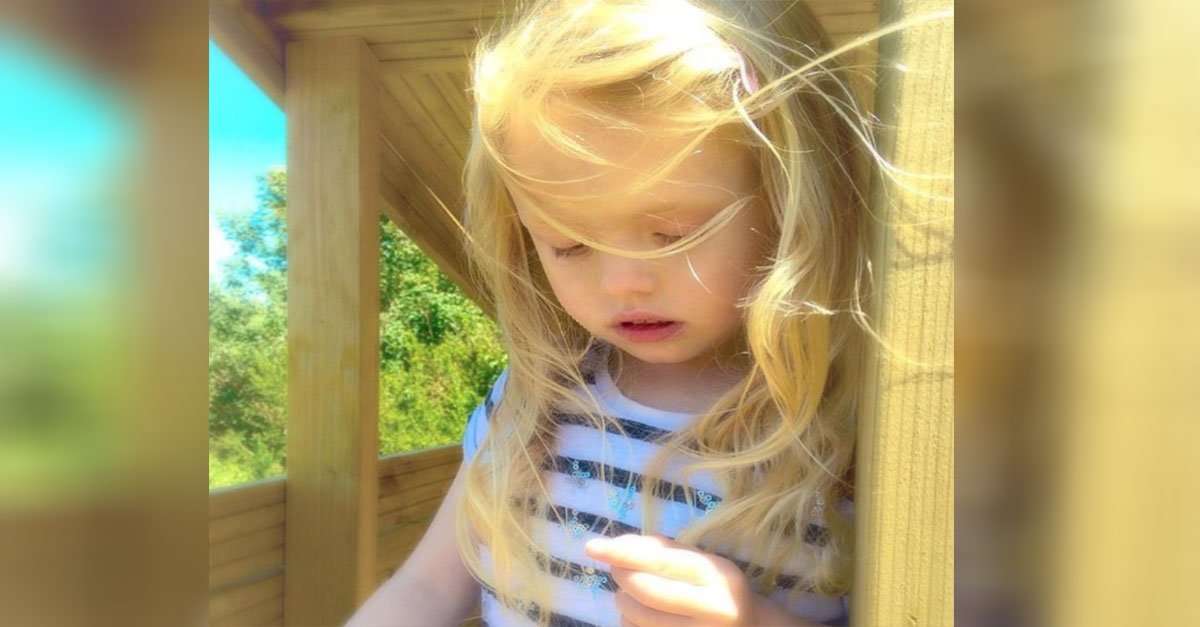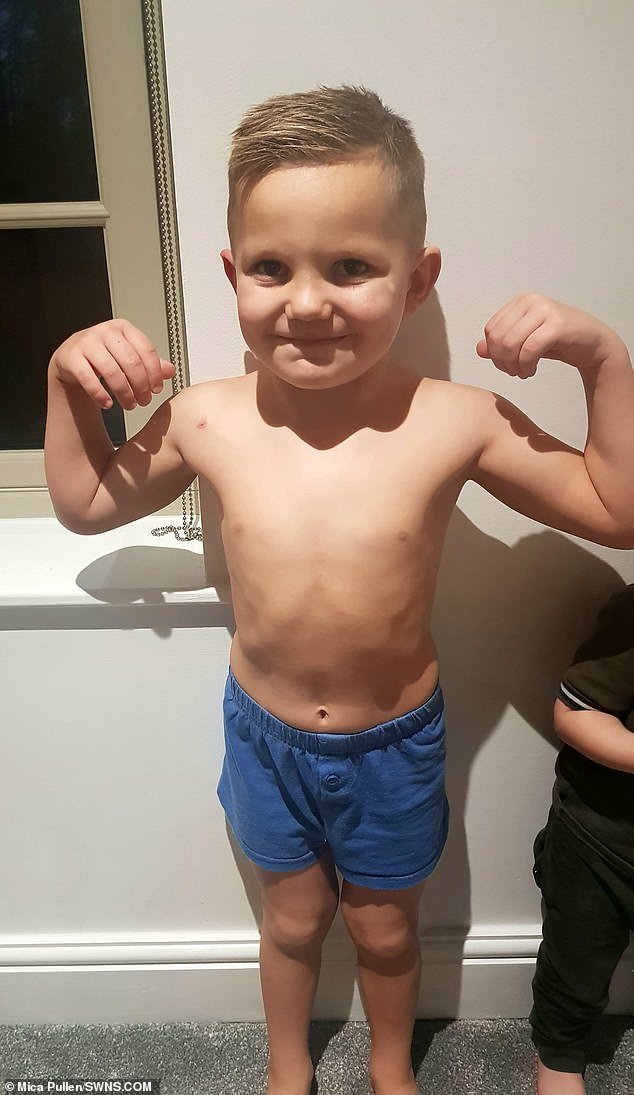Doesn’t Respond To Your Call
Your child interacts with you and others and has normal play habits and sensory responses, but doesn’t respond to your voice when they have their back turned away from you. This may occur in children with autism along with many other symptoms that point to autism.
You may notice patterns of behavior such as those that involve a sensory processing disorder or a lasting and intense focus on objects or topics along with a lack of:
- babbling or use of words
- eye contact
- engagement
If your child is simply not hearing you, there’s a good chance they are either very engaged in play or have some level of hearing loss. If you find that this is an ongoing issue, it is vital to bring up the issue with your child’s health care provider.
There may be no need to worry just yet that your child has autism.
Prioritize Independence And Communication
After baseline medical needs are met and you figure out how to deal with the everyday, I recommend that parents pay particular attention to the areas of communication, self-help and socially appropriate skills. A child who has a high academic ability, but poor communication skills, hygiene or a proclivity to hurt others will greatly limit their opportunities.
Nicole Sugrue, Port Washington, New York
Read Also:
Signs Of Autism In 2 Year Olds
Autism or Autism Spectrum Disorders is the name given to an extensive range of learning disability disorders marked by difficulties in non-verbal communications, diminished social interaction capacities, extremely restricted interests and activities, and repetitive actions or behavior. It does not cause any physical abnormalities or disabilities. It is the most prevalent form of childhood developmental conditions. Medical experts theorize that autism is caused due to different genetic and environmental factors.
As autism tend to affect the development and growth of the brain, the affected child is usually disinterested in communication and socialization. The signs of autism tend to be present in children from infancy itself. However, it often remains undiagnosed till the child becomes 3 years old. Boys are more affected by the disorder than girls.
No type of medical test can indicate whether or not a child is affected by autism. It is therefore vital for parents to carefully observe the actions, development, and behavior of their babies. This is the only manner in which one may notice the symptoms of autism and use the observations as evidence for diagnosis of the disorder.
Recommended Reading: What Type Of Autism Does The Good Doctor Have
Object And Image Scanning
Show your child two objects: 1) a colorful painting and 2) an interesting object, e.g. a rattle. Hold one thing in each hand, with your hands about two feet apart. You should be about one foot away from your babys face. Your baby can be lying down or sitting in a recliner or high chair.
Count how many times your child scans between the object and the picture in one minute.
You may consider repeating this test over a period of a few days and noting the average number of scans.
Generally, you should expect a typically developing infant to scan between four and eight times per minute. The older the child, the more times he/she should scan between the two objects5.
Strong Interest In Unusual Sensory Experiences

Babies with autism can show very strong interest in unusual sensory experiences, such as excessive rubbing of certain textures, looking out the side of their eye or closely inspecting a block or toy train as it rolls by, or licking objects.
If your child shows strong interest in unusual sensory experiences, this may be an early sign of autism.
Also Check: Is Freddie Highmore Really Autistic
Development Of Infants With Early Signs Of Autism
While your baby is growing up, you may wonder if they are developing as they should. There are certain developmental milestones children hit as they grow up.
It is important to keep an eye out for these so that you can see if your child is behind on their development.
- smile at people
- try to look at their parents
- coo
- turn their head towards sound
If you notice that your baby is not engaging in such activities, you may want to get your child tested for ASD.
Clinical Development And Diagnoses
Leo Kannerearly infantile autism
The word autism first took its modern sense in 1938 when Hans Asperger of the Vienna University Hospital adopted Bleulerâs terminology autistic psychopaths in a lecture in German about child psychology. Asperger was investigating an ASD now known as Asperger syndrome, though for various reasons it was not widely recognized as a separate diagnosis until 1981.Leo Kanner of the Johns Hopkins Hospital first used autism in its modern sense in English when he introduced the label early infantile autism in a 1943 report of 11 children with striking behavioral similarities. Almost all the characteristics described in Kannerâs first paper on the subject, notably âautistic alonenessâ and âinsistence on samenessâ, are still regarded as typical of the autistic spectrum of disorders. It is not known whether Kanner derived the term independently of Asperger.
Kannerâs reuse of autism led to decades of confused terminology like infantile schizophrenia, and child psychiatryâs focus on maternal deprivation led to misconceptions of autism as an infantâs response to ârefrigerator mothersâ. Starting in the late 1960s autism was established as a separate syndrome.
Recommended Reading: What Causes Autism Exploring The Environmental Contribution
Don’t Miss: Aspergers Life Expectancy
Signs Of Autism In Young Children
Symptoms of autism spectrum disorder are usually clear by two or three years old. The range of behaviors and skills covered here may become apparent between two years old and five years old.
Some signs that a child has autism spectrum disorder may include:
- Not expressing emotion or only a limited range of emotions
- Difficulty interpreting different emotions in others
- Not seeming attached to parents
- Lacking interest in playing social games or the company of other children
- Interest in playing with one particular toy or object
- Echolalia, repeating other peopleââ¬â¢s words or phrases
- Repeating own words over and over
- Using formal language and expressions, rather than the slang of their peers
- Not developing language skills at all
- Difficulty toilet training
- Challenging behaviour, such as banging head on wall or picking at skin
- Engages in behavior such as flapping hands, rocking or twirling
Children with autism spectrum disorder have difficulty interpreting what other people are thinking and feeling, and often miss social cues. A child with autism may not be able to tell the difference between an adult who says ââ¬Åcome hereââ¬ï¿½ while happy and smiling, and an adult who says ââ¬Åcome hereââ¬ï¿½ while angry and frowning. This can be confusing and creates the impression the child is not connecting with people.
Inflexibility Signs Of Autism In Children
Autistic children are often restricted in their behaviors and movements. They are inflexible, and even obsessive in terms of their activities, behaviors and interests.
- Inflexibility, to an extent, can be an indication of ASD. The following are the signs of inflexibility
- Strict routines – insisting on taking the same route to school every day
- Limited topic of interest – memorizing the train schedules
- Repeating the same actions – flapping hands, rocking back and forth these are also known as stimming, self stimulatory behavior
- Unusual attachments to objects – obsessively lining the trucks or arranging them in a certain order
- Difficulty in adapting to change – getting upset when their routines are interrupted
Read Also: The Good Doctor Actually Autistic
What Age Does Autism Usually Show Up
The behavioral symptoms of autism spectrum disorder often appear early in the childs development. Many children show symptoms of autism between 12 and 18 months of age or earlier, but in others autism may not become obvious until the age of 2 or 3 years. The age of diagnosis, as well as the range and severity of symptoms, can vary widely and so professional evaluation is critical.
Early Signs Of Autism In Babies
A lifelong condition, autism spectrum disorder can be diagnosed before the child turns two. Early diagnosis can make an enormous difference in their quality of life later on.
There are certain early signs that can be observed in a newborn if your child is on the spectrum. You can detect the first signs in your infant really early in their life.
You May Like: Slightly Autistic
Early Signs Of Autism In A 5 Year Old
Once your toddler grows up, certain signs can be missed or confused with signs of growing up. You may want to consult your childs doctor if you see the following signs, which may mean your child has a developmental delay:
- Shows extreme behaviors like unusually aggressive, shy, or sad
- Doesnt show a wide range of emotions
- Usually isnt active
Read Also: How To Make A Visual Schedule For Autism
Autism Signs By 3 Months

- They don’t follow moving objects with their eyes: “Babies at high risk for autism don’t follow caregivers as they move in the visual field,” says Dr. Frazier. “They may be more intrigued by something like a blanket.”
- They don’t respond to loud noises.
- They don’t grasp and hold objects.
RELATED:Signs of Autism in Toddlers
Read Also: Can Autistic People Get Married
Lets Summarize How To Tackle A Speech And Language Development Delay
So, in summary, if you are concerned about your child or any toddler that you know and you cant tell if its a speech delay vs autism, Step #1, learn typical milestones. Google the CDC website, learn the milestones, compare them to what the child is doing. Step #2, talk to your childs pediatrician and their preschool teacher and get a screening done. Start early intervention as soon as possible. And step #3 is you need to learn about ABA. And one of the best places to start is by going to marybarbera.com/toddler. Click the link below to get more information today.
And if you like this video blog, I would love it if you would leave me a comment, give me a thumbs up, and share the video with others who might benefit. Dont forget, you can download my free toddler guide called, Is It Autism, ADHD, or Typical Toddler Tantrums? 3 Steps You Can Take Today Instead of Worrying at , and I hope to see you right here next week.
How Is Asd Treated
One of the biggest challenges is finding the most effective form of treatment. The choices seem endless and differentiating one from another can be daunting. Parents often rely on therapists to direct and administer treatment, but many parents want to learn as much as possible so theyre in the best position to help their child. The most common treatments include applied behavioral analysis, relationship-building strategies, speech/language, and occupational therapy, counseling, and social skills groups.
To learn more, read our ASD Overview article.
Your privacy is important to us. All results are completely anonymous.
Read Also: Growing Out Of Autism Spectrum
Early Identification Is Key
Importantly, no single symptom is necessary or sufficient for a diagnosis. However, more symptoms do increase the potential for a diagnosis.
As well, many children display symptoms consistent with ASD yet grow out of them naturally and do not receive a diagnosis. Experienced clinicians take typical child development into account when determining if a diagnosis is warranted.
If you are concerned that your child may have ASD, an important first step is to speak with your doctor or pediatrician. Autism Canada is an excellent resource that provides information on assessment and intervention opportunities.
Assessment often involves teams of professionals working together to identify a childs fit with the symptoms of ASD and typically includes observation of the child in different settings, interviews with parents and completion of assessment tasks to evaluate a childs development.
Lack Of Eye Contact And Joint Attention
Joint attention refers to two people sharing a focus on the same object after one alerts the other to the item using verbal or nonverbal cues. For example, a parent or caregiver will point to a toy or tell the child about it, and the child will then look at the toy. Joint attention is an important way of connecting and interacting with other people.
According to a 2016 article in PLOS ONE , from about 9 months old, a baby should be able to make regular eye contact and share focus with their caregivers.
Autistic babies can find it challenging to pick up on these social cues and may ignore the person or the object that they are pointing out.
Read Also: Average Life Expectancy Autism
Early Signs Of Autism In Boys
Autism is seen more prevalently in boys than in girls. Therefore, the core symptoms mostly coincide with the symptoms we have mentioned to be seen in children with autism in all ages.
Here are some of the early symptoms in autistic boys:
- Doesnt make eye contact
- Has repetitive behaviors
- Doesnt like physical contact
Later Warning Signs Include:
Its important to note that each and every child is unique. Autism is a complex spectrum disorder and symptoms will range widely from person to person. Each child will vary depending on their measured intelligence, social interaction, communication, behaviors, sensory response, and motor skills. For example, in terms of repetitive behaviors , where do they fall on a scale from mild to intense?
Pay special attention to playtime. If a child under the age of two shows zero interest in showing or sharing toys or prefers to line their toys up instead of playing with, they should be evaluated.
Don’t Miss: Life Expectancy With Autism
Limited Or No Social Interaction
From a very early age, most babies enjoy smiles and being cuddled or held. Babies with autism usually do not respond to these things as other babies do. While many one-year-old babies may make noises to get your attention or imitates facial expressions, most one-year-old babies with autism do not. Smiles and eye contact usually do not occur in response to others. They may seem indifferent to expressions of anger or affection. Infants with autism also may not respond to their own name like others their age, and games of peek-a-boo or itsy-bitsy-spider usually do not hold the same appeal. Some infants may have responded to social interaction early on, but the regressed and stopped showing this social awareness.
- From a very early age, most babies enjoy smiles and being cuddled or held.
- While many one-year-old babies may make noises to get your attention or imitates facial expressions, most one-year-old babies with autism do not.
Behaviour Signs Of Autism In Older Children And Teenagers

Repetitive behaviour and interests Older autistic children and teenagers might:
- have unusual interests or obsessions for example, they might collect sticks or memorise football statistics but not really be interested in the game
- have compulsive behaviour for example, they might line things up or need to close all the doors in the house
- have an unusual attachment to objects for example, they might carry toys around, or collect unusual items like chip packets or shoelaces
- be easily upset by change and like to follow routines for example, they might like to sit in the same seat for every meal or have a special order for getting ready in the morning
- repeat body movements or have unusual body movements, like hand-flapping or rocking
- make repetitive noises for example, grunts, throat-clearing or squealing.
Sensory sensitivitiesOlder autistic children and teenagers might:
- be sensitive to sensory experiences for example, they might be easily upset by certain sounds or uncomfortable clothes, or eat only foods with a certain texture
- seek sensory stimulation for example, they might like deep pressure, seek vibrating objects like washing machines, or flutter fingers to the sides of their eyes to watch the light flicker
- be less responsive to pain than other children.
Also Check: Freddie Highmore Really Autistic
Other Issues Associated With Autism
Older autistic children and teenagers often have other issues as well. These might include:
- difficulty with sleep for example, they might have difficulty falling asleep, or might regularly wake up or have broken sleep patterns
- anxiety or feeling overwhelmed for example, they might feel anxious about going to new places, or being in social situations
- depression older autistic children and teenagers who are aware of their differences are also often aware of how others see them and can feel like outsiders. These feelings of low mood might be intensified by changing hormone levels during puberty
- aggressive behaviour they often have sensory sensitivities that can lead to sudden aggressive behaviour. They might have difficulty understanding whats going on around them, which can lead to frustration building up
- eating disorders for example, they might have difficulty moving to secondary school and might develop an eating disorder to cope with feelings of anxiety
- difficulty with organisational skills they might find the increase in complexity at secondary school hard to manage
- school refusal they might feel overwhelmed or confused at school. They might also be vulnerable to bullying at school
- gender dysphoria autistic children and teenagers can be more likely than other children and teenagers to identify as a gender thats different from the sex they were assigned at birth. If they feel distressed about this its called gender dysphoria.